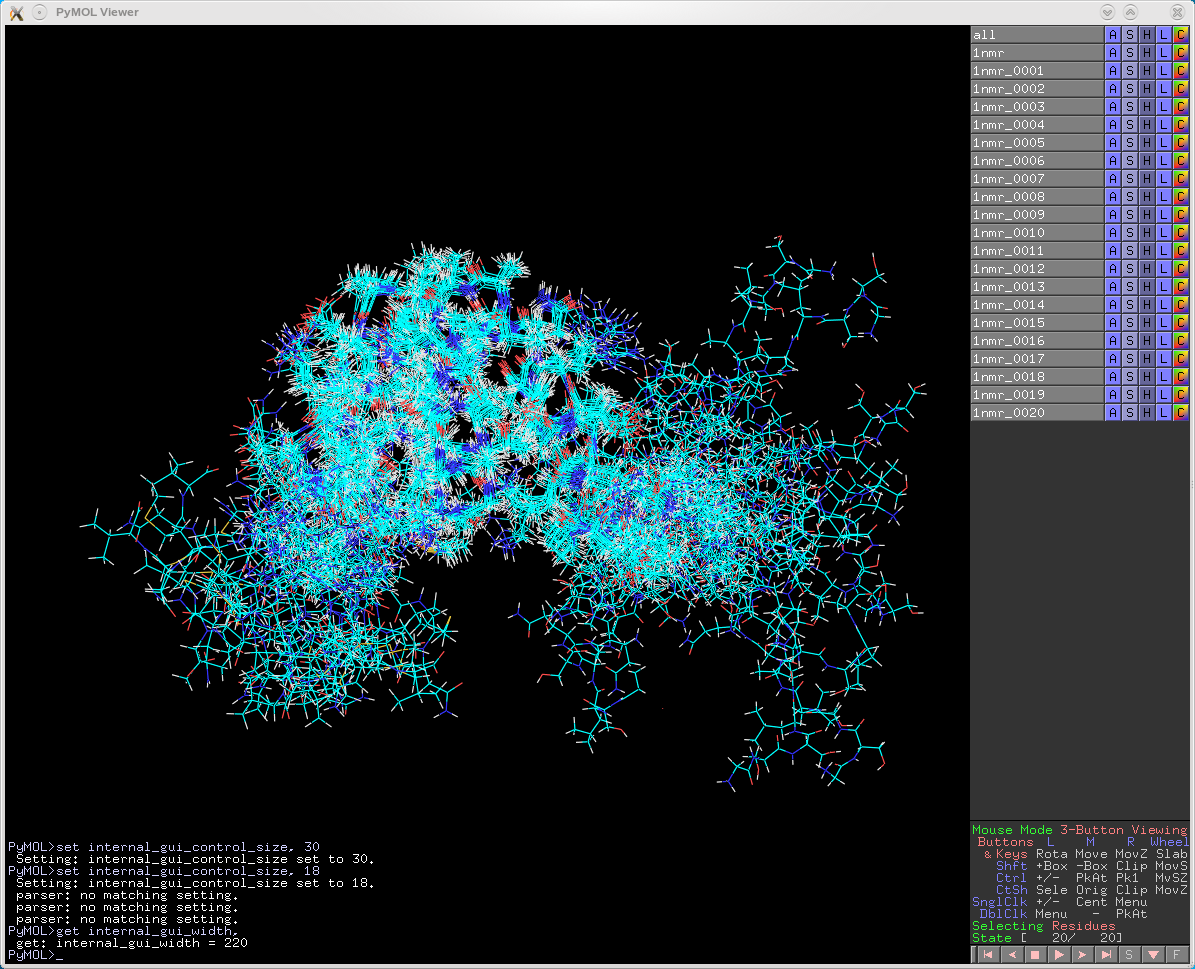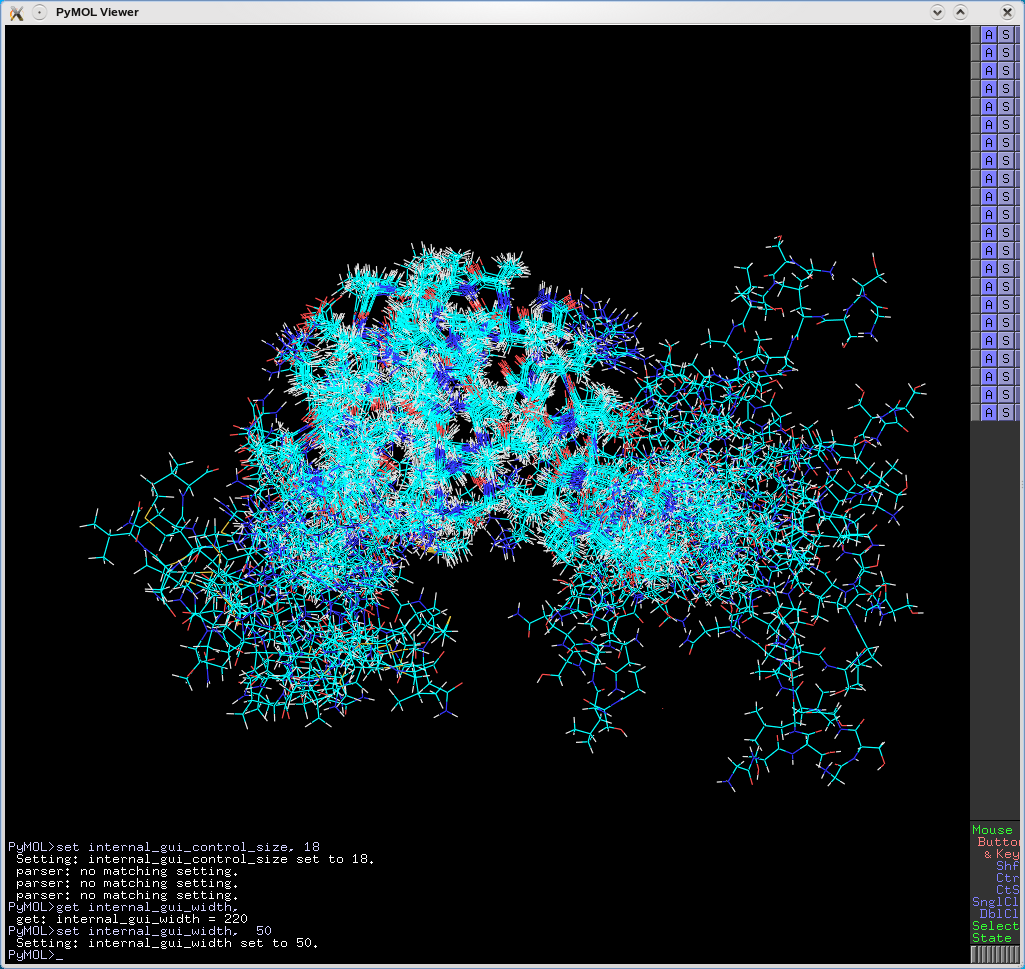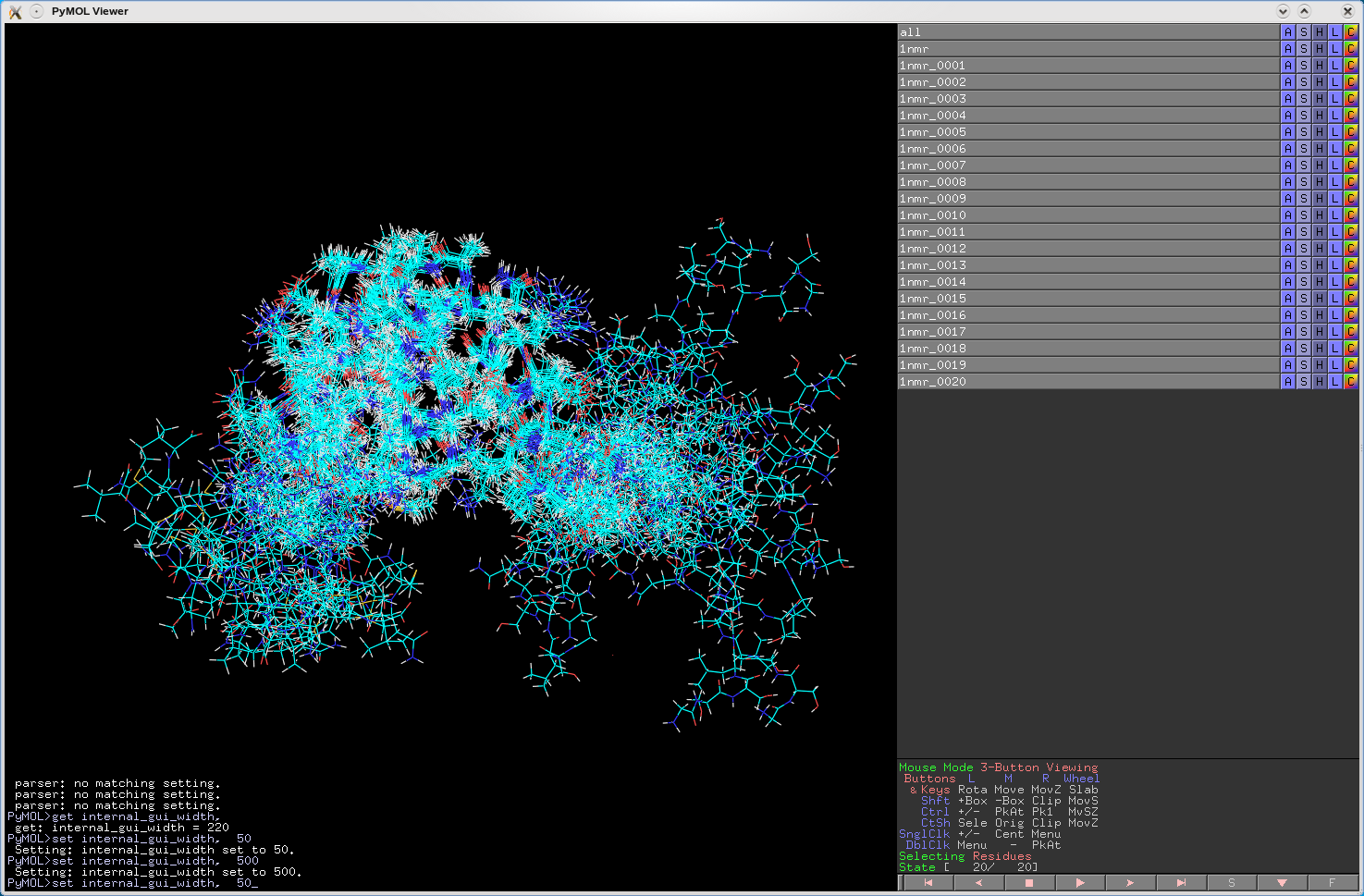Main Page: Difference between revisions
Jump to navigation
Jump to search
(fellowship) |
HannahKullik (talk | contribs) No edit summary |
||
| (17 intermediate revisions by 5 users not shown) | |||
| Line 29: | Line 29: | ||
|+ style="font-size: 1.4em; font-weight: bold; text-align:left; border-bottom: 2px solid #6678b1;" | News & Updates | |+ style="font-size: 1.4em; font-weight: bold; text-align:left; border-bottom: 2px solid #6678b1;" | News & Updates | ||
|- | |- | ||
! | ! New Setup | ||
| [https://pymol. | | [https://github.com/kullik01/pymol-open-source-windows-setup/releases/tag/v3.1.0 PyMOL-open-source-windows-setup v3.1] has been released on January 20, 2025. More information under [[Windows Install]]. | ||
|- | |||
! New Plugin | |||
| [[PySSA]] aims to combine PyMOL and [https://github.com/sokrypton/ColabFold ColabFold] to enable the prediction and analysis of 3D protein structures for the scientific end-user. [https://github.com/urban233/PySSA/releases/tag/v1.0.1 v1.0 has been released] on July 10, 2024. | |||
|- | |||
! Official Release | |||
| [https://pymol.org PyMOL v3.0 has been released] on March 12, 2024. | |||
|- | |- | ||
! New Plugin | ! New Plugin | ||
| [[ | | [[CavitOmiX|CavitOmiX]] calculate [https://innophore.com Catalophore™ cavities], predict protein structures with [https://www.nvidia.com/en-us/gpu-cloud/bionemo OpenFold by NVIDIA-BioNeMo], [https://ai.facebook.com/blog/protein-folding-esmfold-metagenomics/ ESMFold] and retrieve [https://www.deepmind.com/research/highlighted-research/alphafold Alphafold] models | ||
|- | |- | ||
! Official Release | ! Official Release | ||
| [https://pymol.org PyMOL v2. | | [https://pymol.org PyMOL v2.5 has been released] on May 10, 2021. | ||
|- | |||
! Python 3 | |||
| New [[2to3|Python 3 compatibility guide]] for scripts and plugins | |||
|- | |||
! POSF | |||
| [https://pymol.org/fellowship New PyMOL fellowship announced for 2022-2023] | |||
|- | |||
! Tutorial | |||
| [[Plugins Tutorial]] updated for PyQt5 | |||
|- | |||
! New Plugin | |||
| [[PICv|PICv]] is a new plugin for clustering protein-protein interactions and visualization with available data from PDBe | |||
|- | |- | ||
! Selection keywords | ! Selection keywords | ||
| Line 46: | Line 64: | ||
! New Script | ! New Script | ||
| [[dssr_block]] is a wrapper for DSSR (3dna) and creates block-shaped nucleic acid cartoons | | [[dssr_block]] is a wrapper for DSSR (3dna) and creates block-shaped nucleic acid cartoons | ||
|- | |- | ||
! Older News | ! Older News | ||
Latest revision as of 13:01, 21 January 2025
| The community-run support site for the PyMOL molecular viewer. |
| To request a new account, email SBGrid at: accounts (@) sbgrid dot org |
| Tutorials | Table of Contents | Commands |
| Script Library | Plugins | FAQ |
| Gallery | Covers | PyMOL Cheat Sheet (PDF) | Getting Help |
|
|
 A Random PyMOL-generated Cover. See Covers.
|



